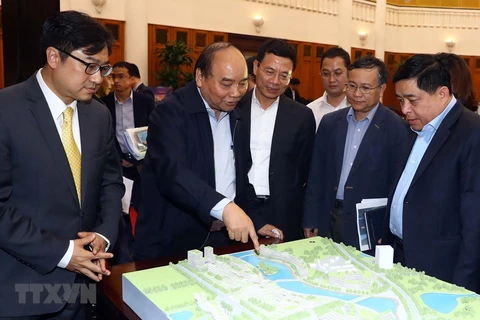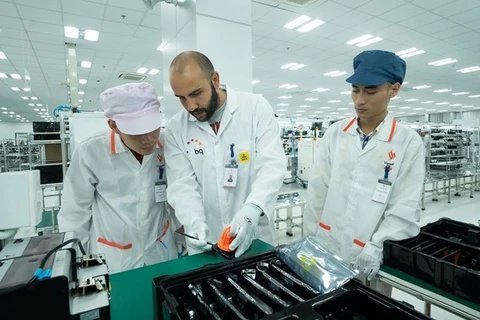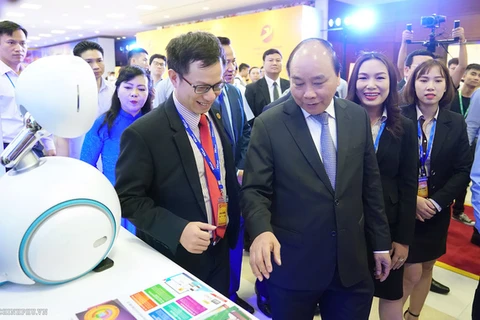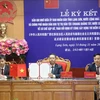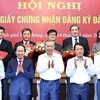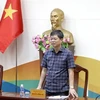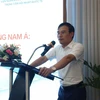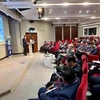 A technology product is introduced to PM Nguyen Xuan Phuc (R) at the national forum on developing technology companies in Hanoi on May 9 (Photo: VNA)
A technology product is introduced to PM Nguyen Xuan Phuc (R) at the national forum on developing technology companies in Hanoi on May 9 (Photo: VNA) Hanoi (VNA) – Technology is the main factor to develop Vietnam’s economy, help it escape from the middle-income trap, and transition into a developed nation, Prime Minister Nguyen Xuan Phuc affirmed at a forum in Hanoi on May 9.
The first-ever national forum on developing technology companies gathered about 1,000 delegates, including officials of the Government, ministries, sectors, and localities, along with hundreds of experts and tech firms from Vietnam and other countries.
In his speech, PM Phuc noted that Vietnam expects by 2045, it will become a prosperous industrialised nation with more than half of its population middle-class.
To escape from the middle-income trap, the first step to be taken is to master technology with innovation and the production of high-quality goods, he said, adding that in the irreversible trend of the Fourth Industrial Revolution (Industry 4.0), tech businesses of Vietnam are critically important to national development.
Vietnam will be able to keep up with developed countries if it can grasp Industry 4.0 opportunities, he said.
At present, digital trade generates about 3.5 billion USD for Vietnam’s economy, equivalent to 1.7 percent of the total GDP, and the figure is forecast to reach 42 billion USD in 2030. There are nearly 50,000 companies working in the information and communications technology sector of Vietnam, earning some 100 billion USD in revenue.
The Government leader noted that during Industry 4.0, economies will shift from a growth model based on cheap labour, land, and natural resources, to one driven by technology and innovation. Many labour-intensive sectors will lose their competitive edge and have to reduce their scale of production.
He called for breakthroughs from mindsets to actions, adding that outdated modes of business must be replaced with those based on technology and innovation.
The Government encourages big businesses that have been successful in foreign markets to return to Vietnam to lead the development of tech companies, PM Phuc said, evoking patriotism in Vietnamese enterprises to join hands in developing a strong and prosperous nation.
In his speech, the PM also noted a national digital transformation strategy will be issued in 2019 to facilitate digital economy and society, thus promoting the market for tech firms.
At the forum, participants discussed the role of Vietnamese tech firms in helping the country escape from the middle-income trap, policies and solutions to develop tech companies, and solutions to connect these businesses. –VNA
VNA

